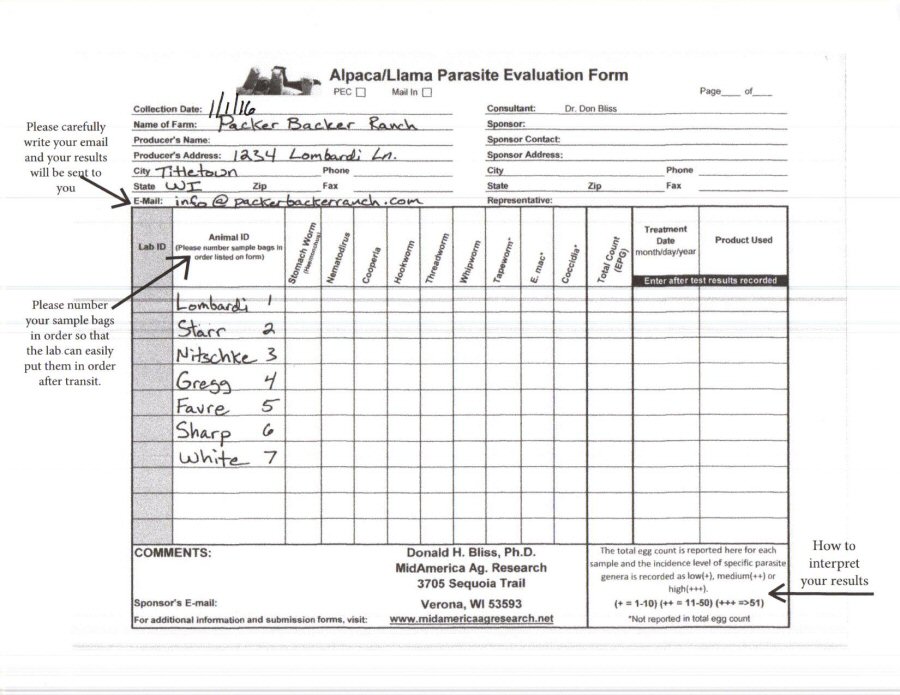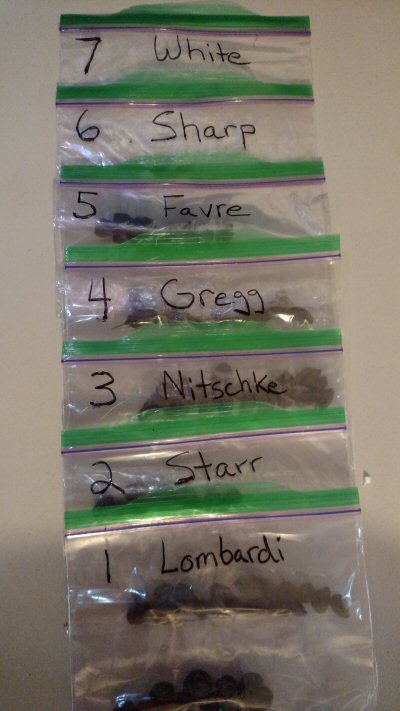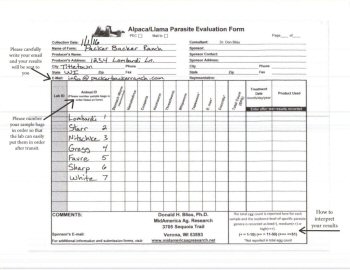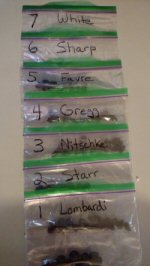Undetected parasitisms in livestock can cause substantial economic loss to producers. The Modified Wisconsin Sugar Flotation Method has been shown to be the most effective method in detecting subclinical parasitism. MidAmerica Agricultural Research uses this technique in an effort to provide accurate diagnosis to determine proper treatment. We hope that this service is of value to you.
Step-by-step instructions
for fecal worm egg count testing
- Required materials:
- Appropriate form printed out from this website
- Individual resealable plastic bags for each sample
- Magic marker for labeling individual bags
- Large resealable plastic bag
- Shipping box or styrofoam container
- Freezer pack or frozen water bottle
- Download and print out the appropriate form from our website
You may choose from the following categories:
Camelid 

Canine and Feline 

Dairy and Beef Cattle 

Equine 

Poultry 

Small Ruminant/Wildlife 

Swine 

- Collect samples - Use an inverted resealable bag like a glove to collect golf-ball size fresh manure. Once picked up, re-invert the bag and then seal. Collect a sufficient number of samples to profile herd (5-10% of each production class), i.e. take samples from adult cows, yearling cattle, replacement heifers, calves and bulls. For dairies, take samples from different stages of lactation. For swine, take multiple samples from various age groups or pens. For horses take individual samples.
- Label and number each sample using a permanent marker with animal name or number, if samples are taken randomly; label age group of animals, pen or pasture where samples were taken.
- Store samples in a refrigerated area. Samples should be cooled to refrigeration temperatures as soon after collection as possible. Samples can be refrigerated for several weeks if necessary. Heat causes worm eggs to develop. Freezing can destroy eggs. Do not composite samples.
- Use Excel form to type email or please write carefully.
- Pack for shipping - Place samples in a larger resealable plastic bag enclosed in a small box or styrofoam container with a freezer pack (or frozen water bottle). Do not send ice.
- Enclose payment - Please include a check made payable to MidAmerica Ag Research for the total cost of testing in your package. We are unable to process without payment and samples are time sensitive. Enclosing a check is the only way to ensure accuracy and timeliness.
Number of Samples Cost per Sample 1 to 3 $12.00 per sample 4 to 9 $10.00 per sample 10 or more $7.00 per sample - Mail - Please ship package next day, second day or priority mail to ensure prompt delivery. Keep your tracking number in the event we need to locate your box.
Please send to:
Dr. Donald H. Bliss
MidAmerica Ag Research
3705 Sequoia Trail
Verona, WI 53593
Phone: 608-798-4901
Email: pat@midamericaagresearch.net - When to expect results - We make every attempt to get results out as soon as possible with most results being sent out a day after receiving samples. This can vary depending on sample volume and lab schedule. If you have not heard within a day or two, please contact info@midamericaagresearch.net. Be sure to include name, email listed on form and date samples sent or received if known. It may be helpful to add this email to your contact list to avoid results being filtered as spam or junk mail.
- Interpretation of results - The results will be reported as the incidence of worm eggs from specific parasite genera. The total number of eggs from all genera found is given at the end of each column except for tapeworm, coccidia and giardia. These parasites are recorded as low(+), medium(++) or high(+++). A 3g sample is taken for all species except for sheep and goats where a 1g sample is used. To determine the number of eggs shed per pound of fecal material use formulas below.
3g sample - Total Egg Count x 150 = number of eggs/pound
1g sample - Total Egg Count x 450 = number of eggs/pound




